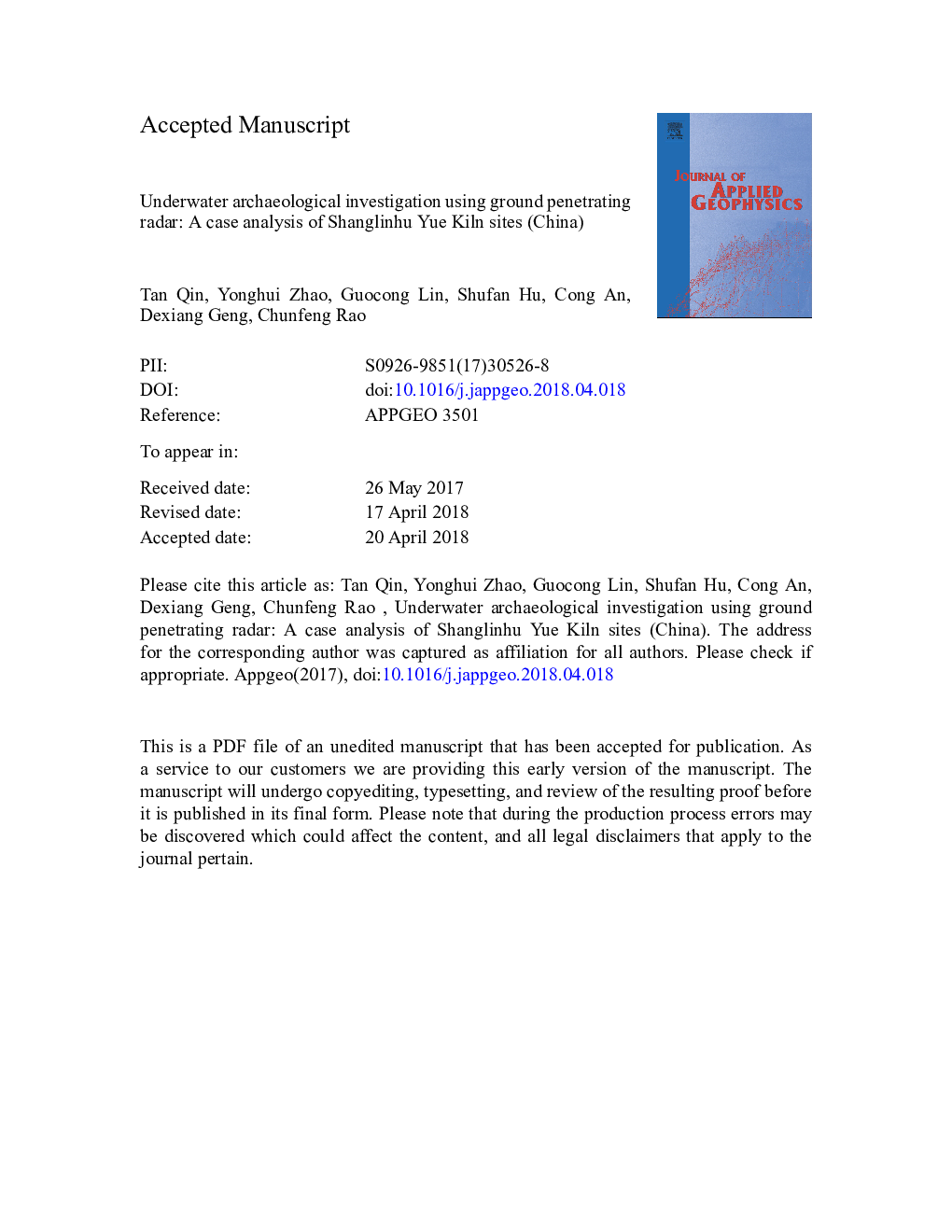| Article ID | Journal | Published Year | Pages | File Type |
|---|---|---|---|---|
| 8915354 | Journal of Applied Geophysics | 2018 | 31 Pages |
Abstract
In this study we explored the possibility and effectiveness of applying ground penetrating radar (GPR) to investigate underwater cultural relics. Using this innovative technique, the remains of Yue kiln and anomalous objects buried beneath the lake or suspended in the water can now be fully studied. Although GPR has been widely used for imaging archaeological sites, skepticism remains over its use in underwater archaeology. Nevertheless, some scholars suggest that it is possible to use GPR to detect underwater remains, which has been further confirmed by the use of electrical parameter measurement (EPM) in Shanglinhu Lake. An experiment was performed by our team using antennas of different frequencies in a particular area of the lake. The results showed that the penetrability of the 100â¯MHz antenna was enough to examine the targets, while the 400â¯MHz antenna performed well in shallow water (depth <4â¯m) due to higher resolution. Hence, for our underwater investigation, we used both antennas for maximum coverage. We used a radargram as a topographic map which shows cross sections of the lake. Analysis of the Shanglinhu Lake data indicated that GPR is a superior tool for underwater archaeological investigation. Traditional methods including sonar, underwater cameras and salvage dives were used as supporting techniques in the study.
Keywords
Related Topics
Physical Sciences and Engineering
Earth and Planetary Sciences
Geophysics
Authors
Tan Qin, Yonghui Zhao, Guocong Lin, Shufan Hu, Cong An, Dexiang Geng, Chunfeng Rao,
